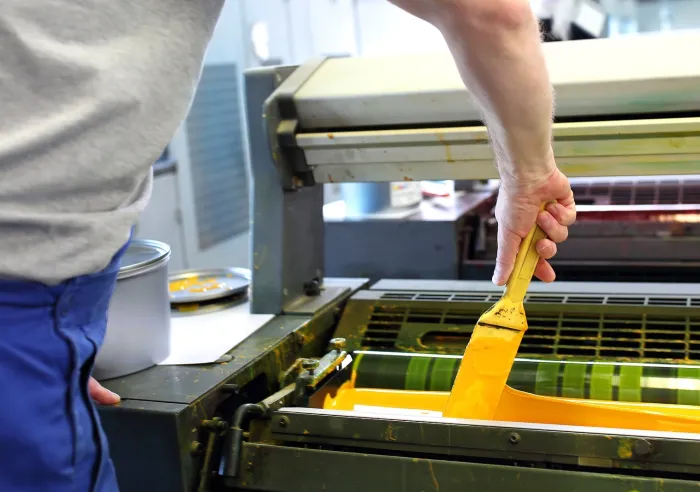Understanding the causes of ghosting in offset printing is crucial for anyone involved in the printing industry, especially marketing professionals who rely heavily on the quality of printed materials to communicate brand messages. Ghosting is a common issue that can significantly affect the final output, leading to dissatisfaction and increased costs due to reprints. In this article, we will explore the various factors that contribute to ghosting and provide insights on how to prevent it.

What is Ghosting in Offset Printing?
Ghosting in offset printing refers to a faint image or unintended mark that appears on the printed sheet, which was not part of the original design. This phenomenon can detract from the quality and clarity of the printed material, making it less appealing and professional. Ghosting can occur due to a variety of reasons, which we will delve into further in this article.
Common Causes of Ghosting
1. Ink Imbalance
An imbalance in the ink distribution can lead to ghosting. When the ink is not evenly distributed across the printing plate, it can create a shadow effect, which results in ghosting. Ensuring that the ink is properly balanced is essential to prevent this issue.
2. Paper Quality
The quality of paper used in offset printing can also impact the occurrence of ghosting. Poor-quality paper may not absorb the ink properly, leading to unintended marks and images. Using high-quality paper that is compatible with the ink and printing process can help reduce the risk of ghosting.
3. Printing Speed
High-speed printing can sometimes cause ghosting due to insufficient time for the ink to dry. When the ink does not dry properly, it can transfer to other areas of the paper, creating a ghost-like image. Adjusting the printing speed to allow adequate drying time can help mitigate this issue.
4. Plate Pressure
The pressure applied by the printing plates can affect the quality of the print. Incorrect pressure settings can lead to ink smudging and ghosting. It is important to ensure that the pressure is set correctly to achieve a clean and clear print.
Prevention Techniques
1. Regular Maintenance
Performing regular maintenance on the printing equipment can help identify and rectify issues that may lead to ghosting. This includes checking the ink distribution system, plate pressure settings, and other critical components.
2. Quality Control
Implementing a robust quality control process can help detect ghosting early and prevent it from affecting a large batch of prints. Regular inspections and tests should be conducted to ensure that the prints meet the desired quality standards.
3. Use of Anti-Ghosting Techniques
There are several anti-ghosting techniques that can be employed in offset printing to minimize the risk of ghosting. These include using anti-set-off powders, adjusting ink viscosity, and optimizing the drying process.
Impact of Ghosting on Marketing Materials
Ghosting can have a significant impact on the effectiveness of marketing materials. Poor-quality prints can lead to a negative perception of the brand and reduce the overall impact of the marketing campaign. Ensuring high-quality prints is essential for maintaining brand integrity and achieving marketing goals.
FAQs
1. How can I identify ghosting in printed materials?
Ghosting can be identified by closely inspecting the printed material for faint or unintended images that do not align with the original design.
2. Is ghosting more common in certain types of printing?
Ghosting is more common in offset printing due to the nature of the printing process, but it can occur in other types of printing as well.
3. Can ghosting be fixed after printing?
Once ghosting has occurred, it is challenging to fix without reprinting. Preventative measures are the most effective way to address this issue.

Conclusion
Understanding the causes of ghosting in offset printing is essential for producing high-quality prints. By addressing common causes such as ink imbalance, paper quality, and printing speed, and implementing effective prevention techniques, printers can ensure that their materials are free from ghosting. This is particularly important for marketing professionals who rely on the quality of printed materials to convey their brand message effectively. For further insights into printing challenges, explore topics like troubleshooting misregistration and offset versus laser printing.
This article contains affiliate links. We may earn a commission at no extra cost to you.






